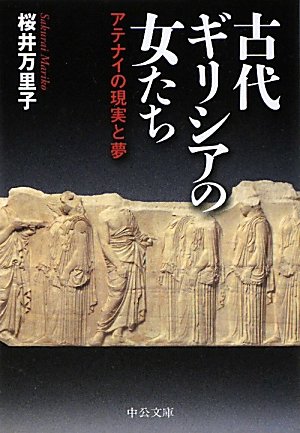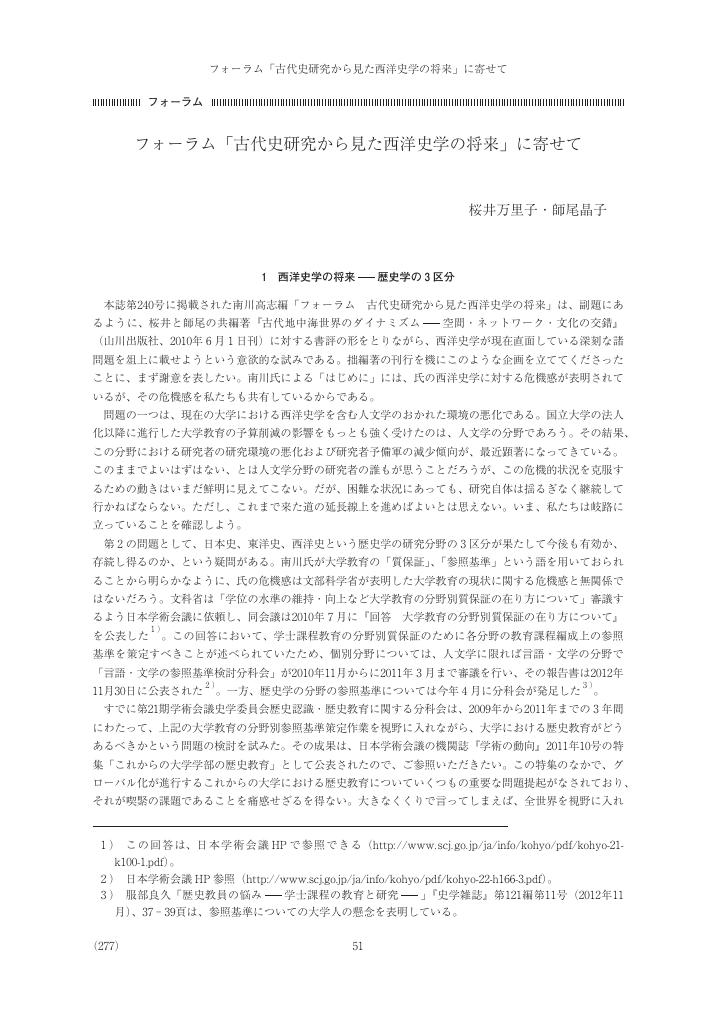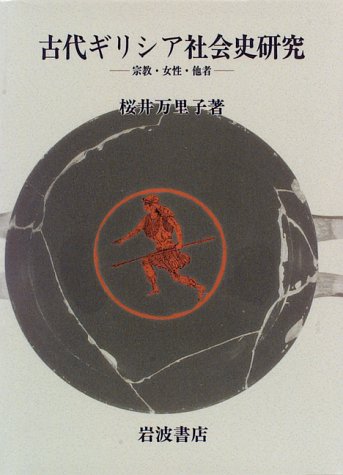32 0 0 0 OA 古代ギリシアの社会をジェンダーの視点から読み解いてみる
- 著者
- 桜井 万里子
- 出版者
- 公益財団法人 日本学術協力財団
- 雑誌
- 学術の動向 (ISSN:13423363)
- 巻号頁・発行日
- vol.15, no.5, pp.5_62-5_63, 2010-05-01 (Released:2010-10-07)
- 参考文献数
- 1
18 0 0 0 IR 史苑の窓 トゥキュディデスと史料
- 著者
- 桜井 万里子 サクライ マリコ Mariko Sakurai
- 出版者
- 立教大学史学会
- 雑誌
- 史苑 (ISSN:03869318)
- 巻号頁・発行日
- vol.74, no.1, pp.1-8, 2014-01
- 著者
- 桜井 万里子
- 出版者
- 公益財団法人 史学会
- 雑誌
- 史学雑誌 (ISSN:00182478)
- 巻号頁・発行日
- vol.94, no.6, pp.1097-1098, 1985
5 0 0 0 OA 史料としての古典文献(シンポジウム「西洋古典学の課題」)
- 著者
- 桜井 万里子
- 出版者
- 日本西洋古典学会
- 雑誌
- 西洋古典學研究 (ISSN:04479114)
- 巻号頁・発行日
- vol.51, pp.114-121, 2003-03-20
5 0 0 0 フォーラム 「古代史研究から見た西洋史学の将来」に寄せて
- 著者
- 桜井 万里子 師尾 晶子
- 出版者
- 日本西洋史学会
- 雑誌
- 西洋史学 (ISSN:03869253)
- 巻号頁・発行日
- no.248, pp.277-282, 2012
4 0 0 0 OA 歴史教育におけるジェンダー視点の導入に関する比較研究と教材の収集及び体系化
- 著者
- 三成 美保 姫岡 とし子 小浜 正子 井野瀬 久美恵 久留島 典子 桜井 万里子 小川 眞里子 香川 檀 羽場 久美子 荻野 美穂 富永 智津子 桃木 至朗 成田 龍一
- 出版者
- 奈良女子大学
- 雑誌
- 基盤研究(B)
- 巻号頁・発行日
- 2012-04-01
本研究の主な成果は、以下の3つである。①三成・姫岡・小浜編『歴史を読み替えるージェンダーから見た世界史』2014年と長野・久留島・長編『歴史を読み替えるージェンダーから見た日本史』2015年の刊行。②前者(『読み替える(世界史編)』)の合評会を兼ねた公開シンポジウムの開催(2014年7月)。③科研費共同研究会(比較ジェンダー史研究会)独自のウェブサイト(http://ch-gender.jp/wp/)の開設。このウェブサイトは、『読み替える』の情報を補足すること及びジェンダー史WEB事典として活用されることをめざしている。また、高校教科書の書き換え案も提示している。
3 0 0 0 古代ギリシアの女たち : アテナイの現実と夢
- 著者
- 桜井 万里子
- 出版者
- 西洋史研究会
- 雑誌
- 西洋史研究 (ISSN:03869288)
- 巻号頁・発行日
- no.33, pp.150-157, 2004
2 0 0 0 古代ギリシアの社会をジェンダーの視点から読み解いてみる
- 著者
- 桜井 万里子
- 出版者
- Japan Science Support Foundation
- 雑誌
- 学術の動向 (ISSN:13423363)
- 巻号頁・発行日
- vol.15, no.5, pp.62-63, 2010
- 著者
- 桜井 万里子
- 出版者
- メトロポリタン史学会
- 雑誌
- メトロポリタン史学 (ISSN:18807542)
- 巻号頁・発行日
- vol.6, pp.253-270, 2010-12
2 0 0 0 OA トゥキュディデスと史料
- 著者
- 桜井 万里子 サクライ マリコ Mariko Sakurai
- 雑誌
- 史苑
- 巻号頁・発行日
- vol.74, no.1, pp.1-8, 2014-01
- 著者
- 桜井 万里子
- 出版者
- 日本西洋古典学会
- 雑誌
- 西洋古典学研究 (ISSN:04479114)
- 巻号頁・発行日
- vol.58, pp.1-11, 2010
How prevalent were the Orphic mysteries in classical Athens? Important evidence for this question was discovered during the second half of the 20th century. In 1978 were published a set of bone tablets with graffiti-like letters of the fifth century BC. from Olbia. The Derveni Papyrus (DP) was found in 1962 from one of the tombs dated around the end of the fourth century near Derveni about twelve kilometers north of Thessaloniki, the editio princeps of which was published in 2006, almost fifty years after its discovery, as T. Kouremenos, G. M. Parassoglou and K. Tsantsanoglou, The Derveni Papyrus, Firenze, 2006. The editors date the papyrus between 340 and 320 BC, whereas the text itself on the papyrus is more difficult to date, but the content of the text is mostly supposed to suggest it is a Preplatonic commentary on the Orpheus theogony. A gold tablet from Hipponion in south Italy published in 1974 turned out to be from 400 BC., the oldest among the same kinds of tablets, and the words mystai and bakchoi in the text have convinced scholars of the Orphic religious significance of this and other gold tablets of the same type. Looking at the sites of the evidence on the map, we cannot suppress the impression that they are in marginal areas in the Greek world, or not in major poleis like Athens or Sparta. Were the Orphic Mysteries not popular in Athens? One paragraph on the deisidaimon in Theophrastos' Kharakteres, 16 persuaded me to assume private practice of the Mysteries by the orpheotelestai in Athens, but Plato's comment in the Republic 364d-e puzzled me as he wrote that agyrtai and manteis(orpheotelestai-like people) persuaded not only private individuals but some poleis. What did Plato mean by the word poleis ? Were there any poleis where the Orphic Mysteries were public ? Athens certainly could not be counted among such poleis. Col. XX of the Derveni Papyrus may help us attain a good understanding of how the Orphic Mysteries were performed in classical Athens. In this column two groups of initiates are contrasted: those who were initiated, participating in the public Mysteries, and those who were initiated in the Mysteries under the guidance of a private professional priest. The editors of the editio princeps of DP believe that both groups were meant to be initiates in the Orphic Mysteries, but I cannot agree with the editors' comment. I would like to propose my own opinion that the former are not initiates in the Orphic Mysteries but initiates in public mysteries like the Eleusinian Mysteries, while the latter are Orphic initiates. Col. XX may shed some light on the way in which the Orphic Mysteries were performed in Athens.
1 0 0 0 OA (フォーラム)フォーラム「古代史研究から見た西洋史学の将来」に寄せて
- 著者
- 桜井 万里子 師尾 晶子
- 出版者
- 日本西洋史学会
- 雑誌
- 西洋史学 (ISSN:03869253)
- 巻号頁・発行日
- vol.248, pp.51, 2012 (Released:2022-04-27)
1 0 0 0 ギリシアとローマ
- 著者
- 桜井万里子 本村凌二著
- 出版者
- 中央公論新社
- 巻号頁・発行日
- 2010
1 0 0 0 大会基調講演 ポリス像の再構築 : アテナイの場合
- 著者
- 桜井 万里子
- 出版者
- 都市史学会 ; 2014-
- 雑誌
- 都市史研究 = Journal of urban and territorial history (ISSN:21890226)
- 巻号頁・発行日
- vol.7, pp.44-50, 2020
1 0 0 0 OA 浦野聡編 『古代地中海の聖域と社会』 (勉誠出版、二〇一七)
- 著者
- 桜井 万里子 サクライ マリコ Mariko Sakurai
- 雑誌
- 史苑
- 巻号頁・発行日
- vol.78, no.1, pp.259-264, 2018-02-26
1 0 0 0 OA 史料としての古典文献(シンポジウム「西洋古典学の課題」)
- 著者
- 桜井 万里子
- 出版者
- 日本西洋古典学会
- 雑誌
- 西洋古典学研究 (ISSN:04479114)
- 巻号頁・発行日
- vol.51, pp.114-121, 2003-03-20 (Released:2017-05-23)
1 0 0 0 OA 桜井万里子・姫岡とし子対談インタビュー : 「ジェンダー史学を語る」
- 著者
- 桜井 万里子 姫岡 とし子
- 出版者
- 東京大学大学院人文社会系研究科西洋史学研究室「クリオの会」
- 雑誌
- クリオ = Clio : a journal of European studies
- 巻号頁・発行日
- vol.23, pp.44-64, 2009






